Unmasking local activity within local field potentials (LFPs) by removing distal electrical signals using independent component analysis
- PMID: 26899209
- PMCID: PMC4885644
- DOI: 10.1016/j.neuroimage.2016.02.032
Unmasking local activity within local field potentials (LFPs) by removing distal electrical signals using independent component analysis
Abstract
Local field potentials (LFPs) are commonly thought to reflect the aggregate dynamics in local neural circuits around recording electrodes. However, we show that when LFPs are recorded in awake behaving animals against a distal reference on the skull as commonly practiced, LFPs are significantly contaminated by non-local and non-neural sources arising from the reference electrode and from movement-related noise. In a data set with simultaneously recorded LFPs and electroencephalograms (EEGs) across multiple brain regions while rats perform an auditory oddball task, we used independent component analysis (ICA) to identify signals arising from electrical reference and from volume-conducted noise based on their distributed spatial pattern across multiple electrodes and distinct power spectral features. These sources of distal electrical signals collectively accounted for 23-77% of total variance in unprocessed LFPs, as well as most of the gamma oscillation responses to the target stimulus in EEGs. Gamma oscillation power was concentrated in volume-conducted noise and was tightly coupled with the onset of licking behavior, suggesting a likely origin of muscle activity associated with body movement or orofacial movement. The removal of distal signal contamination also selectively reduced correlations of LFP/EEG signals between distant brain regions but not within the same region. Finally, the removal of contamination from distal electrical signals preserved an event-related potential (ERP) response to auditory stimuli in the frontal cortex and also increased the coupling between the frontal ERP amplitude and neuronal activity in the basal forebrain, supporting the conclusion that removing distal electrical signals unmasked local activity within LFPs. Together, these results highlight the significant contamination of LFPs by distal electrical signals and caution against the straightforward interpretation of unprocessed LFPs. Our results provide a principled approach to identify and remove such contamination to unmask local LFPs.
Keywords: 1/f power spectrum; Basal forebrain; Event-related potential; Functional connectivity; Gamma oscillation; Movement artifact.
Published by Elsevier Inc.
Figures

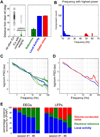
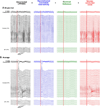
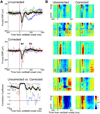
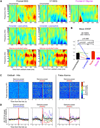

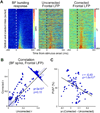
Similar articles
-
Recording human electrocorticographic (ECoG) signals for neuroscientific research and real-time functional cortical mapping.J Vis Exp. 2012 Jun 26;(64):3993. doi: 10.3791/3993. J Vis Exp. 2012. PMID: 22782131 Free PMC article.
-
Neural processing of auditory stimuli in rats: Translational aspects using auditory oddball paradigms.Behav Brain Res. 2025 Mar 28;482:115428. doi: 10.1016/j.bbr.2025.115428. Epub 2025 Jan 9. Behav Brain Res. 2025. PMID: 39798883
-
Primary Generators of Visually Evoked Field Potentials Recorded in the Macaque Auditory Cortex.J Neurosci. 2017 Oct 18;37(42):10139-10153. doi: 10.1523/JNEUROSCI.3800-16.2017. Epub 2017 Sep 18. J Neurosci. 2017. PMID: 28924008 Free PMC article.
-
In Vivo Observations of Rapid Scattered Light Changes Associated with Neurophysiological Activity.In: Frostig RD, editor. In Vivo Optical Imaging of Brain Function. 2nd edition. Boca Raton (FL): CRC Press/Taylor & Francis; 2009. Chapter 5. In: Frostig RD, editor. In Vivo Optical Imaging of Brain Function. 2nd edition. Boca Raton (FL): CRC Press/Taylor & Francis; 2009. Chapter 5. PMID: 26844322 Free Books & Documents. Review.
-
Cognitive neuroscience of creativity: EEG based approaches.Methods. 2007 May;42(1):109-16. doi: 10.1016/j.ymeth.2006.12.008. Methods. 2007. PMID: 17434421 Review.
Cited by
-
Uncorrelated bilateral cortical input becomes timed across hippocampal subfields for long waves whereas gamma waves are largely ipsilateral.Front Cell Neurosci. 2023 Jul 27;17:1217081. doi: 10.3389/fncel.2023.1217081. eCollection 2023. Front Cell Neurosci. 2023. PMID: 37576568 Free PMC article.
-
Temporally organized representations of reward and risk in the human brain.Nat Commun. 2024 Mar 9;15(1):2162. doi: 10.1038/s41467-024-46094-1. Nat Commun. 2024. PMID: 38461343 Free PMC article.
-
Theoretical considerations and supporting evidence for the primary role of source geometry on field potential amplitude and spatial extent.Front Cell Neurosci. 2023 Mar 30;17:1129097. doi: 10.3389/fncel.2023.1129097. eCollection 2023. Front Cell Neurosci. 2023. PMID: 37066073 Free PMC article. Review.
-
Variations in Clustering of Multielectrode Local Field Potentials in the Motor Cortex of Macaque Monkeys during a Reach-and-Grasp Task.eNeuro. 2024 Sep 27;11(9):ENEURO.0047-24.2024. doi: 10.1523/ENEURO.0047-24.2024. Print 2024 Sep. eNeuro. 2024. PMID: 39288997 Free PMC article.
-
Adaptive common average reference for in vivo multichannel local field potentials.Biomed Eng Lett. 2017 Jan 11;7(1):7-15. doi: 10.1007/s13534-016-0004-1. eCollection 2017 Feb. Biomed Eng Lett. 2017. PMID: 30603146 Free PMC article.
References
-
- Bédard C, Kröger H, Destexhe A. Does the 1/f frequency scaling of brain signals reflect self-organized critical states? Phys. Rev. Lett. 2006;97:118102. - PubMed
-
- Bell AJ, Sejnowski TJ. An information-maximization approach to blind separation and blind deconvolution. Neural Comput. 1995;7:1129–1159. - PubMed
Publication types
MeSH terms
Grants and funding
LinkOut - more resources
Full Text Sources
Other Literature Sources
Miscellaneous

